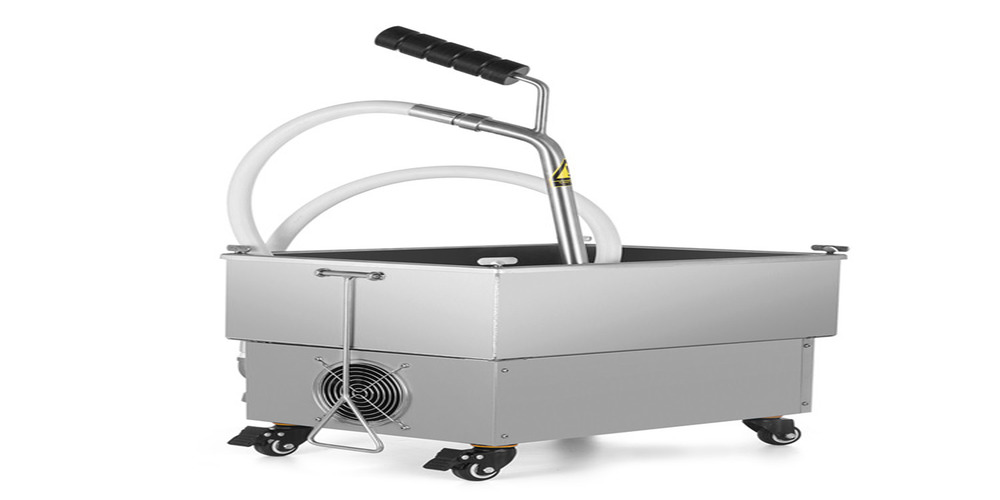If you’re a restaurateur, food service provider or home cook who uses deep fryers, you should be filtering your used oil to reuse it. This is because not only does filtering your oil save money on purchasing new cooking oil every time you want to make batches of french fries or doughnuts, but it also helps minimize the environmental impact of disposing of dirty old grease down the drain. In this article we’ll walk through how to use a fryer oil filter machine so that you can learn how easy and effective it is!
Remove the old oil filter.
The first step to setting up a fryer oil filter machine is removing the old oil filter. To do this, you will need to use a screwdriver and turn it counter-clockwise in order to loosen the filter from its base. Make sure you have the right size filter before doing so; otherwise, it won’t fit into your new machine! After taking off your old filter, clean up any spills or drips of leftover oil with a towel or paper towel.
Remove the filter machine’s lid.
The first step in using a fryer oil filter machine is removing the lid. To do this, turn it counterclockwise until it comes off (this will be easier if you have someone help you hold it upright). The lid should come off easily and stay securely upright while you’re working on your oil filtration project.*
Position the funnel over the filter machine.
Once you’ve removed the funnel and filter machine, it’s time to put them back together. Make sure that you have both items next to each other, with the filter machine on the left and the funnel on top of it.
Positioning them in this order will make it easier for you to drop your oil into the funnel without spilling any over yourself or your work area.
Open a new oil filter.
Now that you’ve got your oil filter machine, you may be wondering how to use it. The first step is to open a new oil filter. This is where the cleaning process begins, but don’t worry—it’s easy! All you have to do is remove the cap from your new oil filter and place it in your fryer machine as-is. Now that your clean, new oil filter has been inserted into your fryer machine, all that’s left is adding some cooking oil and getting started!
Pour the fryer oil into the funnel of the fryer oil filter machine.
Once you have collected the used oil in a container, you can then pour it into the machine. Make sure to use a new filter every time you do this; worn-out filters will not trap particles as effectively. Also, make sure that the amount of oil is sufficient to fill up the filter machine (usually between 20 and 30 gallons).
Once your fryer has been operating for an extended period of time, you may notice that there are chunks of food sticking to the walls of your fryer. These pieces will remain even after regular cleaning and changing out all of your filters. This is something that only happens over long periods at high temperatures—and it can be dangerous if left unchecked! To prevent any problems with this build-up getting out of hand (or worse: catching fire) invest in one final piece of equipment: a liquid deaerator (sometimes referred to simply as “deaerator”). This device removes oxygen from heated liquids via gas bubbles by passing them through coils immersed in water or steam before returning them back into their original containers so they can be reused safely without fear thereof exploding due to clogged pipes or valves bursting open due
Use a dry towel to wipe off any spills from the fryer oil filter machine exterior.
- Use a dry towel to wipe off any spills from the fryer oil filter machine exterior.
- Make sure that your fryer oil filter machine is completely dry before placing it back into the fryer. If you leave wet oil on the exterior of your fryer, it will rust over time and become unusable. It is important to clean off all spills immediately after use so they do not have a chance to dry and stain or otherwise damage your machine’s exterior finish.
Place a clean grease bucket beneath your used cooking oil receptacle or storage container.
- Place a clean grease bucket beneath your used cooking oil receptacle or storage container.
- The bucket should be large enough to catch all the oil, but not so big that it will overflow onto your countertop when you pour in the used grease.
- It should also be clean and dry; if you are placing this in an area where food is prepared, make sure there aren’t any holes or cracks in the bucket itself (or place it on top of a cutting board).
- Do not use plastic buckets for this purpose—the heat from hot oil can melt plastic containers!
It is possible to accurately filter your used fryer oil for reuse in about five minutes
It is possible to accurately filter your used fryer oil for reuse in about five minutes. With some practice, you will be able to get the job done in even less time than that. The first thing that you need to know is what kind of filters are available for your machine, and how they work.
Conclusion
You should now be confident in using your fryer oil filter machine. Remember, not all machines are created equal, so make sure you buy from a reputable manufacturer who provides quality customer service and support.


